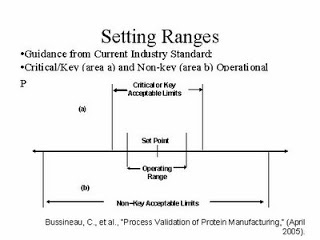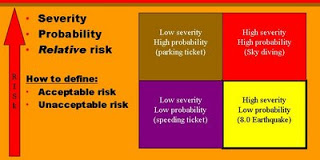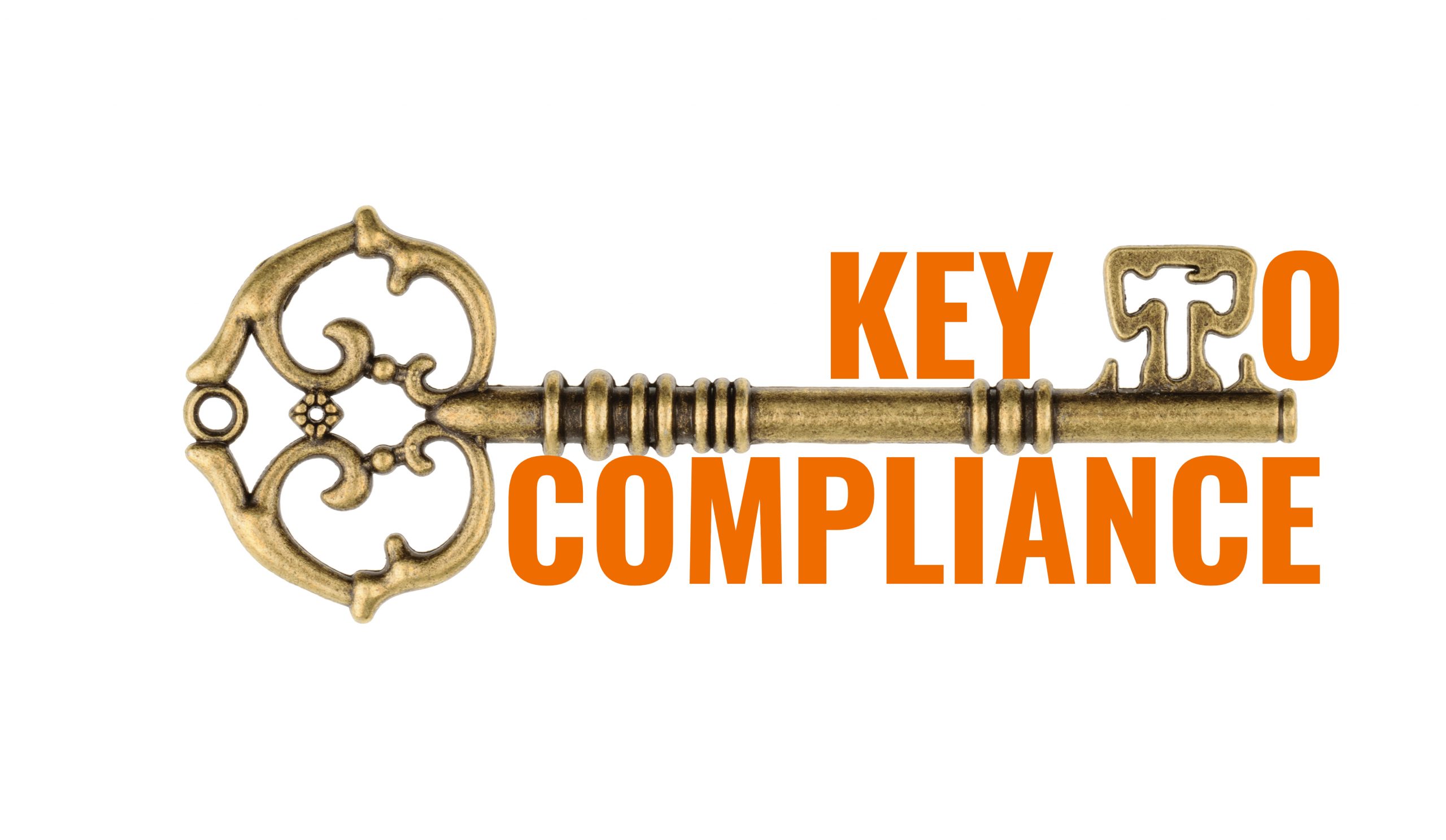ICH Q9 elements of risk management
Risk Identification -> Risk Assessment ->Risk Mitigation -> Risk Communication
How to identify risk
•Theoretical analysis
-Science, engineering, or math
•Based on experiments
-Structured or unstructured experiments
-Edge of failure or validation
•Statistically derived
-Trend analysis
-Science, engineering, or math
•Based on experiments
-Structured or unstructured experiments
-Edge of failure or validation
•Statistically derived
-Trend analysis
FMEA and HACCP
FMEA salient features
•How can the process fail?
-Power outage stops mixing
-Wrong valve open sends product to drain
•How can each mode be made less likely to occur, and less harmful if it does occur?
-Back-up power, UPS
-Feedback or automation control
-Power outage stops mixing
-Wrong valve open sends product to drain
•How can each mode be made less likely to occur, and less harmful if it does occur?
-Back-up power, UPS
-Feedback or automation control
ICH Q8 design space

Risk AssessMent

Risk can be reduced by
•Risk mitigation—two strategies
•Reduce the severity (building codes for earthquake resistance; testing)
•Reduce the probability (stop sign at intersection of two roads; training)
•Reduce the severity (building codes for earthquake resistance; testing)
•Reduce the probability (stop sign at intersection of two roads; training)

